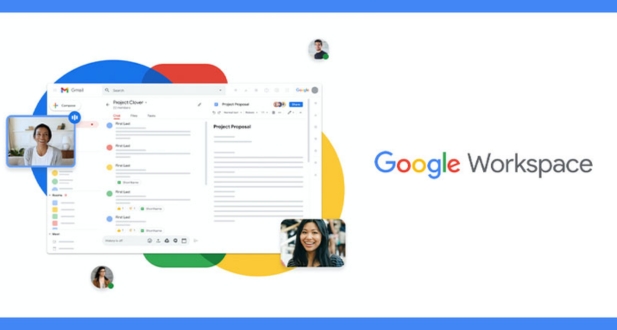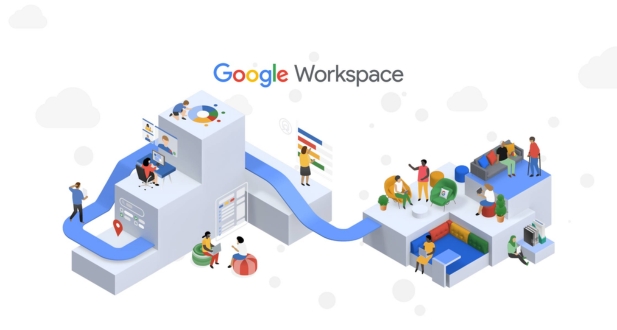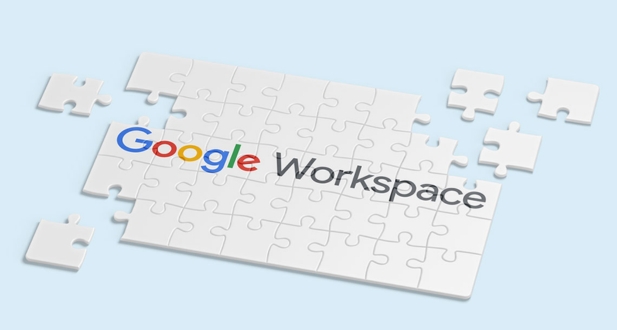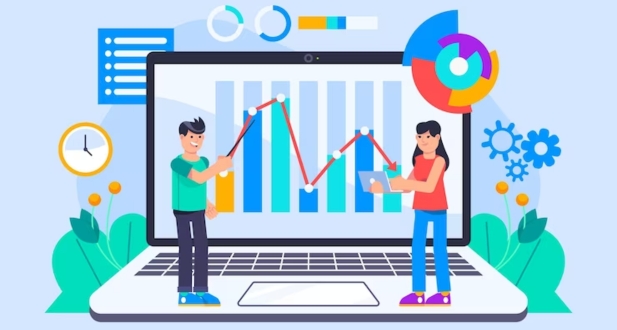In the ever-evolving landscape of digital collaboration and productivity tools, Google Workspace stands as a cornerstone for organizations seeking seamless communication, efficient collaboration, and enhanced productivity. With its suite of applications such as Gmail, Google Drive, Google Docs, Sheets, Slides, and more, Google Workspace has become an indispensable part of the modern workplace.
As businesses increasingly rely on Google Workspace to streamline their operations, the need for insightful analytics and comprehensive reporting has grown exponentially. Advanced Google Workspace Analytics and Reporting go beyond basic usage metrics, providing organizations with deep insights into user behavior, collaboration patterns, security risks, and overall performance. In this article, we will explore the significance of advanced analytics within Google Workspace and how organizations can leverage these tools to optimize their workflow and enhance productivity.
Understanding the Basics: Google Workspace Analytics Overview

Google Workspace Analytics is a set of tools designed to provide organizations with insights into how their teams are utilizing the Google Workspace platform. Before diving into advanced analytics, it’s crucial to grasp the fundamental concepts that form the basis of this analytical approach. The built-in analytics tools in Google Workspace offer a comprehensive overview of user activity, file sharing, collaboration, and security metrics.
A. Usage Metrics:
Usage metrics offer a snapshot of how users engage with various Google Workspace applications. These metrics encompass a range of activities, including the number of logins, emails sent and received, documents created, and more. By understanding these metrics, organizations can identify usage patterns, user preferences, and areas for potential improvement. This information is valuable for optimizing workflows, ensuring resource efficiency, and tailoring the Google Workspace experience to the specific needs of the organization.
B. Collaboration Insights:
Collaboration insights focus on understanding how teams work together within the Google Workspace environment. This involves tracking activities such as document sharing, co-editing, and real-time collaboration. Analyzing collaboration patterns allows organizations to enhance teamwork, identify bottlenecks in the collaborative process, and streamline overall work processes. These insights are essential for fostering a more collaborative and efficient work environment.
C. Security Metrics:
In today’s digital landscape, security is a top priority. Google Workspace analytics provide insights into security-related events and potential risks. This includes monitoring suspicious login attempts, tracking document sharing with external users, and identifying data exfiltration risks. By leveraging these security metrics, organizations can proactively address security concerns, detect and respond to potential threats, and enforce robust data protection measures. This aspect of analytics is crucial for maintaining the integrity and confidentiality of sensitive information within the Google Workspace platform.
The foundational aspects of Google Workspace Analytics encompass usage metrics, collaboration insights, and security metrics. These tools empower organizations to gain a holistic understanding of their teams’ interactions with the platform, facilitating informed decision-making, improved collaboration, and enhanced security measures.
The Evolution to Advanced Analytics

While basic analytics provide a foundational understanding of user behavior, advanced analytics take it to the next level by offering more granular insights and predictive capabilities. Advanced Google Workspace Analytics and Reporting incorporates sophisticated algorithms, machine learning, and artificial intelligence to deliver actionable intelligence for decision-makers.
Predictive Analytics
Predictive analytics within Google Workspace leverage historical data to forecast future trends. This includes predicting peak collaboration times, identifying potential security threats, and anticipating user needs.
- Forecasting Peak Collaboration Times: Predictive analytics can analyze historical data on user collaboration patterns to identify when peak collaboration is likely to occur. This helps organizations allocate resources effectively.
- Identifying Security Threats: By analyzing historical security incidents and patterns, predictive analytics can anticipate potential security threats within Google Workspace, allowing proactive measures to be taken.
- Anticipating User Needs: Understanding past user behavior enables predictive analytics to anticipate future user needs. This could involve suggesting relevant documents or resources and enhancing user experience.
Machine Learning-driven Insights
Machine learning algorithms analyze vast datasets to identify patterns and anomalies. In the context of Google Workspace, machine learning can be applied to understand user behavior, optimize workflow processes, and enhance the overall user experience. For example, machine learning algorithms can recommend relevant documents, automate routine tasks, and personalize user interfaces.
- User Behavior Analysis: Machine learning algorithms can analyze vast datasets of user interactions within Google Workspace. This analysis helps understand patterns, preferences, and behavior, leading to insights that can be used to optimize user experiences.
- Workflow Optimization: By identifying patterns in workflow processes, machine learning can suggest improvements, automate routine tasks, and streamline workflows within Google Workspace.
- Personalization: Machine learning can personalize user interfaces based on individual preferences, making the overall user experience more efficient and enjoyable.
Customizable Dashboards
Advanced reporting goes beyond pre-packaged dashboards, allowing organizations to create customized views tailored to their specific needs. These dashboards provide a holistic view of Google Workspace usage, collaboration patterns, and security metrics. Customization empowers decision-makers to focus on the metrics that matter most to their unique organizational goals.
- Holistic View of Usage: Instead of relying on pre-packaged dashboards, organizations can create custom views tailored to their unique requirements. This enables decision-makers to focus on specific metrics that align with their organizational goals.
- Collaboration Patterns: Custom dashboards can display detailed insights into Google Workspace usage and collaboration patterns. This information is valuable for strategic decision-making and resource allocation.
- Security Metrics: Organizations can design dashboards that provide a comprehensive overview of security metrics within Google Workspace, aiding in monitoring and ensuring data integrity.
Use Cases for Advanced Google Workspace Analytics

User Productivity Optimization:
Behavior Analysis: Advanced analytics can analyze user behavior within Google Workspace, identifying patterns and interactions. This includes how users collaborate, the features they use most frequently, and areas where productivity bottlenecks occur.
Workflow Optimization: By understanding user workflows, organizations can optimize processes. This involves recommending improvements, highlighting underutilized features.
- Collaboration Strategies: Insights from analytics can provide guidance on effective collaboration strategies. This might involve identifying successful team structures, communication methods, and tools that contribute to increased productivity.
Security Threat Detection:
- Anomaly Detection: Machine learning algorithms can detect anomalies in user behavior, signaling potential security threats. This includes identifying unusual login patterns, access from unfamiliar locations, or suspicious activity that may indicate a data breach.
- Unauthorized Access: Advanced analytics can monitor and flag instances of unauthorized access to sensitive information. This proactive approach helps in preventing data breaches and maintaining the integrity of the organization’s digital assets.
Resource Planning and Allocation:
- Usage Patterns: Analytics can reveal usage patterns within Google Workspace, indicating peak usage times and resource bottlenecks. This information is crucial for organizations to allocate resources efficiently, ensuring that teams have the necessary tools and capabilities during periods of high demand.
- Efficient Allocation: Insights from analytics enable organizations to allocate resources judiciously, avoiding over-provisioning or under-provisioning of resources. This ensures a seamless user experience and optimal performance of Google Workspace applications.
Compliance Monitoring:
- Data Access Monitoring: Advanced analytics can track and monitor user activities related to data access. This includes who accesses sensitive information, when, and how frequently, ensuring that data is handled in accordance with regulatory requirements.
- Document Collaboration Compliance: Organizations can use analytics to monitor document sharing and collaboration activities, ensuring compliance with internal policies and external regulations. This is particularly critical in industries with stringent data protection and privacy requirements.
- In summary, advanced Google Workspace analytics contribute to a more informed and efficient workplace by optimizing user productivity, enhancing security, facilitating resource planning, and ensuring compliance with industry regulations.
Implementing Advanced Google Workspace Analytics
In today’s fast-paced business environment, the ability to effectively harness data and analytics is crucial for success. Google Workspace, with its suite of cloud-based productivity tools, offers a powerful platform for businesses to collaborate, communicate, and manage their operations. By implementing advanced analytics in Google Workspace, organizations can unlock deeper insights, enhance decision-making, and optimize workflows.
Understanding Google Workspace Analytics
Google Workspace Analytics refers to the processes and tools used to collect, analyze, and interpret data from various Google Workspace applications such as Gmail, Drive, Calendar, and Meet. This data can provide valuable insights into employee productivity, collaboration patterns, and resource utilization.
Setting the Stage for Advanced Analytics
The first step in implementing advanced analytics in Google Workspace is to identify key business objectives and relevant metrics. For instance, an organization might want to measure the effectiveness of internal communication, the usage patterns of collaboration tools, or the efficiency of project management processes.
Data Collection and Integration
Effective analytics begins with data collection. Google Workspace offers built-in reporting features that provide basic insights. However, for more advanced analytics, integrating Google Workspace data with third-party analytics tools or platforms is often necessary. This integration allows for more comprehensive data collection and analysis, including custom metrics tailored to specific business needs.
Leveraging Google Data Studio
One powerful tool for advanced analytics is Google Data Studio. It can integrate data from various Google Workspace applications and other sources, offering a unified view of metrics and KPIs. Custom dashboards can be created to visualize data, making it easier to identify trends, patterns, and areas for improvement.
Analyzing Collaboration and Productivity
Advanced analytics can reveal insights into how employees interact and collaborate. By analyzing data from Gmail, Chat, and Meet, organizations can understand communication patterns and identify bottlenecks. Similarly, analyzing data from Drive can provide insights into document sharing and collaboration efficiency.
Enhancing Security with Analytics
Security is a paramount concern for any organization. Advanced analytics can help in identifying potential security threats by analyzing user behavior patterns and access logs. Anomalies in data access or user behavior can be quickly flagged for further investigation, enhancing overall security.
Customizing Analytics for Specific Needs
Each organization has unique needs and challenges. Customizing analytics to these specific requirements is essential for deriving meaningful insights. For instance, a marketing team might focus on analyzing email campaigns through Gmail, while an IT department might concentrate on the usage and performance of infrastructure services.
Training and Change Management
Implementing advanced analytics is not just a technical challenge; it also requires organizational change. Training employees to understand and utilize analytics tools is crucial. Additionally, fostering a data-driven culture where decisions are based on insights derived from analytics can significantly enhance the effectiveness of these initiatives.
Continuous Improvement through Analytics
Advanced analytics in Google Workspace is not a one-time effort but an ongoing process. Regularly reviewing and adjusting metrics, dashboards, and analytics strategies ensures that they remain aligned with evolving business goals and industry trends.
Implementing Advanced Google Workspace Analytics” involves a strategic and systematic approach to integrating advanced analytics tools within Google Workspace for optimal results. Here’s a more detailed description of the key steps mentioned:
Define Objectives and Key Metrics:
Clearly outlining the objectives of implementing advanced analytics is crucial. Organizations need to identify specific key metrics that align with their broader goals. These objectives could revolve around productivity enhancement, improved security measures, or efficient resource utilization.
Choose the Right Analytics Tools:
Selecting appropriate analytics tools is pivotal. Google Workspace offers integrations with third-party analytics solutions, each with unique features. Organizations should evaluate these options based on their specific needs, ensuring that the chosen tools align with their goals and workflow.
Integrate Machine Learning and AI:
To unlock predictive insights, it’s recommended to integrate machine learning and artificial intelligence into analytics processes. Machine learning-driven tools can enhance the accuracy of predictions, enabling proactive decision-making based on data-driven insights.
Customize Dashboards for Stakeholders:
Tailoring analytics dashboards to meet the unique needs of different stakeholders is essential. Whether it’s executives, IT administrators, or department heads, providing relevant and actionable insights through customized dashboards enhances the usability and effectiveness of advanced analytics tools.
Establish Data Governance and Security Measures:
Given the sensitive nature of the data involved, robust data governance and security measures are imperative. Implement encryption, access controls, and monitoring protocols to safeguard data integrity and privacy. This step ensures that the implementation of advanced analytics is compliant with data protection regulations.
Provide Training and Support:
For successful adoption, it’s important to provide adequate training to users and administrators on utilizing advanced analytics tools effectively. Ongoing support should also be available to address any issues that may arise, fostering widespread acceptance and usage across the organization.
Future Trends in Google Workspace Analytics
These are just a few of the trends that we can expect to see in Google Workspace Analytics in the future. As Google continues to develop its cloud-based productivity suite, we can also expect to see new and innovative ways to use Google Workspace data to improve business outcomes.
In addition to the trends listed above, we can also expect to see Google Workspace Analytics becoming more integrated with other Google products and services. For example, we may see integration with Google Search, Google Ads, and Google Cloud Platform. This will allow organizations to get an even more complete view of their data and make even better decisions.
Overall, the future of Google Workspace Analytics is bright. With its powerful features and integrations, Google Workspace Analytics can help organizations of all sizes track, measure, and improve their use of Google Workspace products.
Augmented Analytics
- Natural Language Processing (NLP):
Augmented analytics will leverage NLP to enable users to interact with data using natural language. This means that individuals, regardless of their technical background, can ask questions in plain language and receive meaningful insights from the Google Workspace Analytics platform.
- Conversational Analytics:
The integration of conversational analytics will make data exploration and analysis more interactive. Users can engage in a dialogue with the analytics platform, making the process of extracting information more intuitive and user-friendly.
- Accessibility for Non-Technical Users:
With augmented analytics, the barrier for entry into data analysis is lowered. Non-technical users will find it easier to derive insights from complex datasets, democratizing data access across various teams within
Enhanced Collaboration Insights
- Sentiment Analysis:
Future analytics tools within Google Workspace may incorporate sentiment analysis to understand the emotional tone of communications. This can be valuable in assessing team morale, identifying potential issues, and fostering a positive work environment.
- Team Dynamics Analysis:
Deeper insights into collaboration patterns will include the analysis of team dynamics. Understanding how teams work together, communicate, and share information can lead to improvements in overall collaboration, efficiency, and employee satisfaction.
- Comprehensive Collaboration Metrics:
Beyond traditional metrics, future analytics tools may provide a more comprehensive view of collaboration. This could include tracking how often teams meet, the effectiveness of virtual communication, and the impact of collaboration on project outcomes.
Continuous Improvement through Feedback Loops
- Real-time Feedback:
Analytics-powered feedback loops will operate in real-time, providing immediate insights into ongoing processes. Teams can receive feedback on their performance, identify bottlenecks, and make timely adjustments to enhance productivity.
- Iterative Workflow Improvement:
The availability of real-time analytics insights will facilitate iterative improvements in workflows. Teams can adapt quickly to changing requirements, experiment with different approaches, and optimize processes based on data-driven feedback.
- Agile Decision-Making:
Organizations can embrace a more agile approach to decision-making with continuous improvement feedback loops. This agility enables them to respond swiftly to market changes, customer feedback, and internal dynamics, fostering a culture of adaptability and innovation.
Conclusion
Advanced Google Workspace Analytics and Reporting represent a paradigm shift in how organizations harness the power of data to drive productivity, enhance security, and optimize collaboration. As businesses increasingly rely on digital collaboration platforms, the ability to derive meaningful insights from the vast amounts of data generated is a strategic advantage.
By embracing advanced analytics, organizations can unlock the full potential of Google Workspace, gaining a competitive edge in today’s dynamic business landscape. As we look to the future, the integration of cutting-edge technologies such as machine learning, augmented analytics, and continuous improvement feedback loops will further elevate the role of analytics in shaping the modern workplace. As organizations navigate the complexities of the digital age, advanced Google Workspace Analytics and Reporting emerge as a beacon, guiding them towards a more efficient, secure, and collaborative future.
You can analyze data related to user activity, file sharing, collaboration, email usage, and more across various Google Workspace applications.
Google Workspace provides both predefined reports and the option to create custom reports based on specific metrics and parameters.
Utilize collaboration and user activity reports to monitor file sharing, document collaboration, and other user interactions within Google Workspace.
Yes, you can schedule and automate reports to receive regular updates on user activity, system performance, and other relevant metrics.
You can analyze security-related events, such as login activity, account changes, and data sharing, to identify and address potential security threats.








